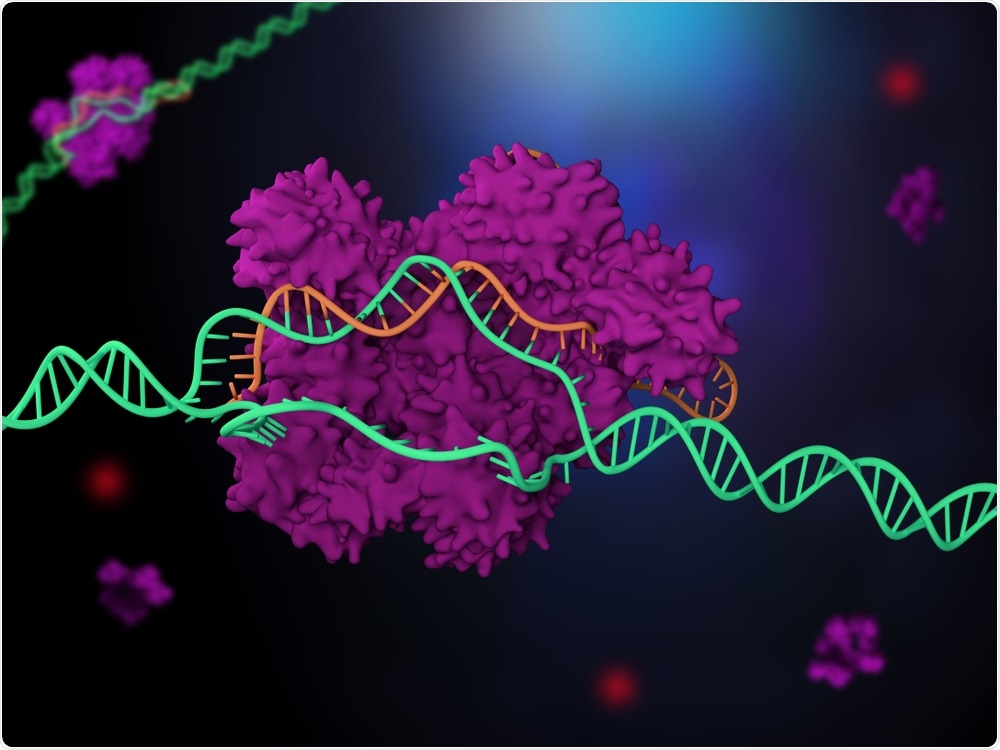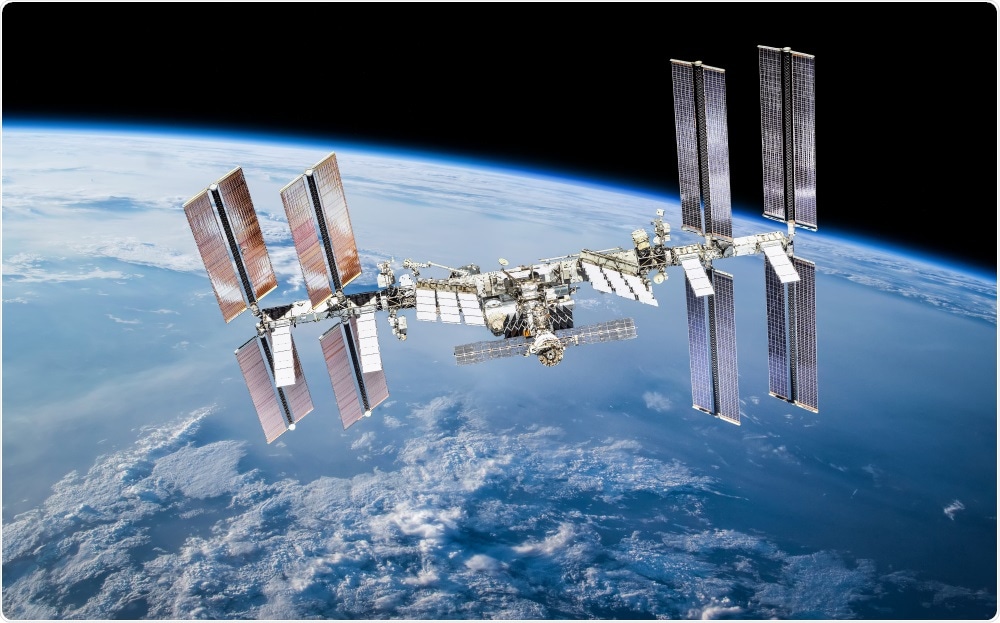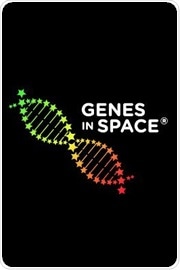In our latest interview, AZoLifeSciences spoke to a team of researchers about their latest research which involved carrying out CRISPR/Cas9 in Space.
Please could you introduce yourself and tell us what inspired your research into CRISPR/Cas9 in Space?
We are a team of students from the Minneapolis/St. Paul area who participated in the Genes in Space competition as juniors in high school in 2018. Currently, we are all studying biology in college – David at MIT, Michelle at Johns Hopkins, and Aarthi and Rebecca at Yale.
In high school, we were all doing biology research at the University of Minnesota and David was working with CRISPR-Cas9. After coming across the Genes in Space competition online and reading about the NASA Twin Study, we became interested in studying DNA damage and repair in space and thought that CRISPR-Cas9 would be the perfect tool to use.
During our continued research on the subject, we found out that previous studies on the effects of microgravity on DNA repair had been limited to using simulated microgravity or inducing breaks on earth before studying repair in space. We wanted to overcome these limitations by designing an experiment that would allow scientists to carry out the entire process in space.

CRISPR/Cas9. Image Credit: Meletios Verras/Shutterstock.com
Since its discovery in 2012, CRISPR/Cas9 has been utilized across many sectors of both the medical and life sciences industry. Why has this system become so useful and important to research?
CRISPR-Cas9 is a really easy-to-use, efficient gene-editing tool. CRISPR-Cas9 is adaptable and specific. It can be targeted to nearly any region in the genome that a researcher wants to study in any organism, just by designing a 20-nucleotide guide RNA sequence. Once targeted to a specific region, Cas9 typically creates a double-strand break. This triggers the DNA repair mechanisms in the cell often resulting in a change in the DNA sequence at that location.
However, Cas9 has been adapted for many other functions including activating or inhibiting the expression of a certain gene. As a result of the system’s versatility, it has become an indispensable tool in all areas of biological research. In our study, we utilized CRISPR-Cas9 to create a very targeted double-strand break instead of using other methods of DNA damage that would create randomly located breaks in the genome. Being able to choose and know the location of the break made it easy to then assess how that break was repaired in microgravity.
The CRISPR-Cas9 system was an invaluable tool in our study and the specificity, convenience, and efficiency of the system is similarly beneficial for a lot of other experiments.
How does DNA become damaged and methods are available to repair it?
DNA damage can be caused by a wide variety of chemicals, environmental factors, and other sources including the ionizing radiation that astronauts are exposed to in space. There are two major methods that cells employ to repair their DNA when double-strand breaks are formed. The first is an error-prone method called non-homologous end joining (NHEJ), where the cell uses a specific set of proteins that are able to rejoin the ends of the DNA without a template.
However, this method can cause mutations in the repaired DNA compared to the original sequence. The other method, homologous recombination (HR), is essentially error-free; the cell uses a different mechanism that involves a template sequence that it copies to restore the original DNA sequence.
Can you describe how you carried out your latest research into DNA repair in Space? What role did CRISPR/Cas9 genome editing technology play?
We designed the experiment with the help of our mentor Dr. Deniz Atabay, who was a graduate student at MIT at the time. After the competition, we were lucky to work with Dr. Sarah Wallace and Sarah Stahl-Rommel to improve and adapt our experiment to the conditions and limitations on the ISS, Dr. G. Guy Buskin who advised us on genome editing and DNA repair in Saccharomyces cerevisiae, as well as scientists and engineers at miniPCR bio and Boeing.
After the launch in May of 2019, we watched astronauts Nick Hague, David Saint-Jacques, and Christina Koch carry out the experiments live on the station. CRISPR-Cas9 has everything to do with our project! It was the key tool that enabled us to simulate double-strand breaks caused by ionizing radiation entirely in space.
CRISPR-Cas9 allowed us to choose exactly where the break formed, as opposed to treating the cells with radiation or other chemicals that would induce random breaks and unknown locations. With tools such as the miniPCR thermal cycler and minION sequencer, we were able to sequence the break site we chose and study exactly what happened – specifically, whether the cell repaired the DNA correctly or not. This was really exciting because we were able to completely eliminate the confounding effects of transferring the cells from earth to space mid-experiment, which could potentially impact repair.

International Spce Station. Image Credit: Dima Zel/Shutterstock.com
What did you discover?
First, CRISPR-Cas9 works in space! This method of gene editing is now known to be a viable tool to use in space biology research aboard the ISS. To make it possible to perform CRISPR-Cas9 genome editing in space, we actually needed to carry out several complex techniques aboard the International Space Station and including several procedures that had never been done in space.
For example, we needed to insert the instructions for making the components of the CRISPR/Cas9 genome editing system into yeast cells as well as for instructions for how to repair the DNA after it was cut by Cas9. Inserting foreign DNA into cells (transformation) had never been performed successfully in space prior to the Genes in Space-6 mission so this alone was an ambitious goal.
Once the cells had been transformed with the CRISPR-Cas9 components and repair instructions, we used molecular methods previously established on the International Space Station – PCR and DNA sequencing – to assess if we had successfully edited the DNA at the location we were targeting. By establishing this complete molecular biology workflow on the station we hoped to enable future research into DNA repair choice in microgravity.
How could this breakthrough research also help to further understand long-term space exposure as well as DNA damage caused by ionizing radiation?
Now that the necessary tools have been validated on the station and the experimental design has been tested to study DNA repair fully in space, the experiment can be repeated and expanded to include a large enough sample size to draw valuable conclusions about how DNA repair is altered in space compared to on Earth.
This has huge implications for DNA repair that occurs in astronauts when they are exposed to ionizing radiation in space for long periods and can motivate protective measures as well as future medical advancements for astronauts returning from spaceflight.
The ongoing COVID-19 pandemic has taught us the importance of collaborating to achieve goals. How important was teamwork and collaboration to this research?
Teamwork and collaboration were definitely essential to our research; Within our own team, we definitely brought different skills to the table and were able to constantly bounce ideas off of each other.
Our mentor Deniz provided invaluable guidance and support through the entire process, helping us to refine not only our proposal by introducing us to new science but also pushed us to develop as scientists from, experimental design to presentation.
We were so fortunate to collaborate with amazing scientists at NASA, Boeing, and miniPCR bio. They’re the ones who really took our idea and brought it to life – in space! Overall, this experiment could not have been done without every single person involved. It is a great example of what is possible from the unique partnership between high school students, scientists, educators, and biotechnology and aerospace leaders facilitated by the Genes in Space contest.
What are the next steps in your research?
While the current study is a huge milestone in the field of space biology, the data we collected isn’t sufficient to answer the question we initially posed in our application to the Genes in Space contest – how is DNA repair pathway choice impacted by microgravity. Expanding this experiment to generate enough data to really be able to understand DNA repair choice and the effects of microgravity on DNA repair in space would be a great next step.
An important long-term goal would be to use this information to find effective ways of mitigating the impact of microgravity on DNA repair to lower the risks to future space travelers.
Where can readers find more information?
Press release - CRISPR proposal wins Genes in Space 2018 competition: https://www.genesinspace.org/news/press/genes-space-stem-competition-announces-winning-high-school-team/
Press release - Gene editing carried out on International Space Station: https://www.genesinspace.org/news/press/first-successful-crisprcas9-gene-editing-international-space-station/
Genes in Space contest: genesinspace.org
Publication in PLOS One: https://journals.plos.org/plosone/article?id=10.1371/journal.pone.0253403
About the Researchers
Rebecca Li – studying Molecular, Cellular, and Developmental Biology at Yale. Works in Dr. Amy Bei’s lab and is conducting a functional analysis of the malaria vaccine candidate PfRipr.
Aarthi Vijayakumar – studying Molecular Biophysics and Biochemistry at Yale. Works in Dr. Joan Steitz’s lab and is studying the role of long noncoding RNAs produced by readthrough transcription on the antiviral response.
Michelle Sung – studying Molecular and Cellular Biology and Public Health at Johns Hopkins. Works in Dr. Angelo De Marzo’s lab and is analyzing the correlation between MYC copy number and expression and mechanisms of MYC regulation in prostate cancer.
David Li – Is a student at MIT. He has continued his interest in gene editing methods and currently works in Dr. Feng Zhang’s lab. His current work focuses on new tools for targeted gene insertion and directed evolution.
About Genes in Space
Genes in Space is an experimental design competition for students in middle and high school. We invite students to design DNA experiments that address challenges faced by space travelers and fly one winning project to the International Space Station each year.
Since the contest was founded in 2015, we have launched 7 student investigations to space. Contest winners have been responsible for space biology milestones including the first DNA amplification with PCR in space, and the first use of CRISPR gene-editing technology in space. The 2022 application opens this January.
Learn more at www.genesinspace.org